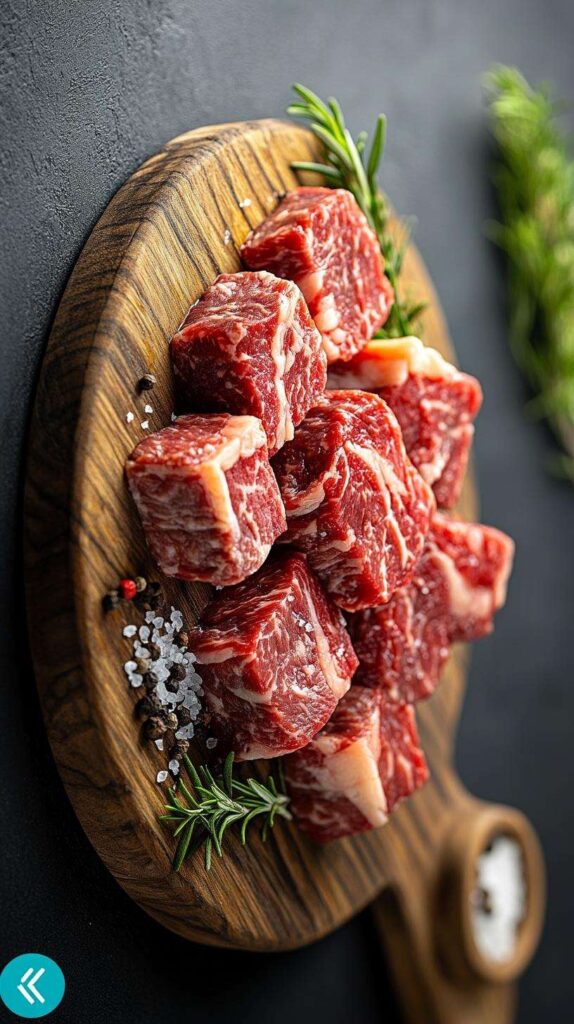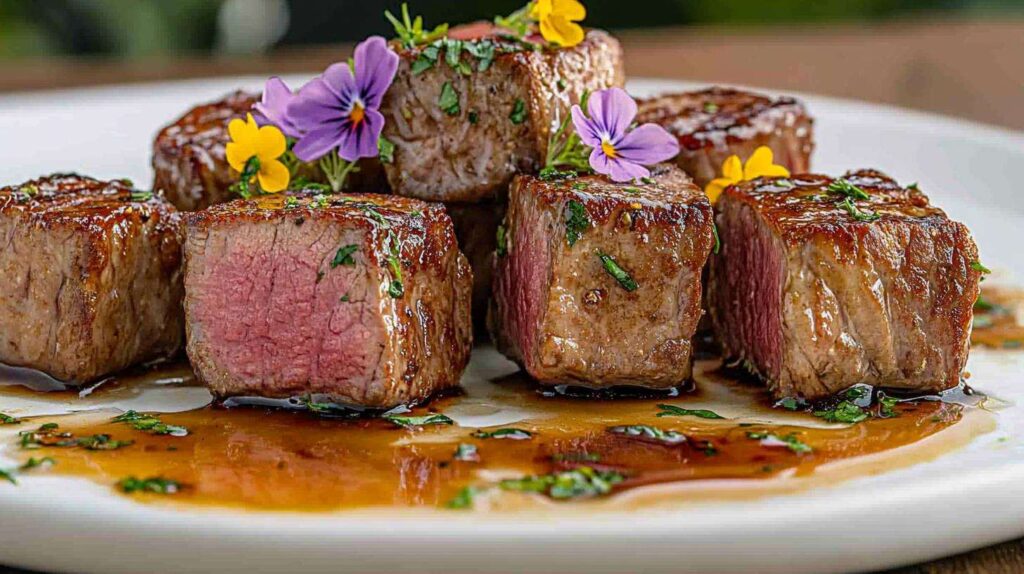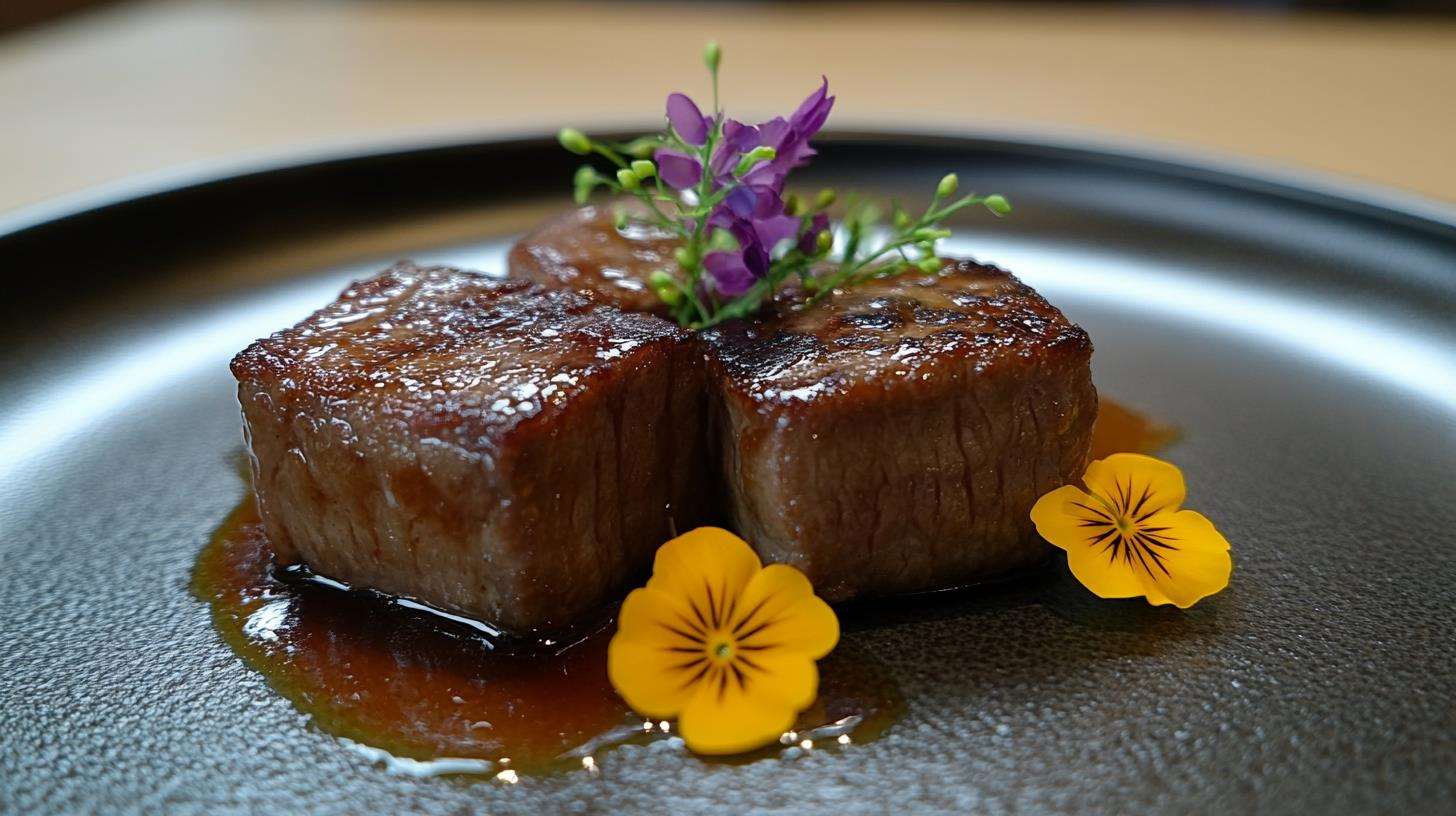Have you ever found yourself standing in the meat section, staring at rows of beef, and wondering, “What Cut of Steak Is Best for Teriyaki?” Trust me, you’re not alone. The right steak can turn your teriyaki dish into a masterpiece, while the wrong one? Well, let’s just say it can leave you less than satisfied. Don’t worry—by the time you finish this article, you’ll be a pro at choosing the best steak for teriyaki! 🥩✨
What Cut of Steak Is Best for Teriyaki?
The Popularity of Teriyaki Sauce
Teriyaki sauce isn’t just a sauce; it’s a flavor explosion. Sweet, savory, and packed with umami, this Japanese-inspired glaze has become a global favorite. Whether it’s drizzling over grilled meat or being used as a marinade, teriyaki sauce has that magic touch that transforms ordinary ingredients into something extraordinary. But let’s face it: not all steak cuts can handle the bold flavors of teriyaki.
“Teriyaki is like the superstar of sauces—it needs a steak that can keep up with its fame!”
Importance of Choosing the Right Steak Cut
Here’s the thing: teriyaki works best when paired with a steak that can soak up the marinade and still retain its juicy texture. Some cuts are too tough, while others might lack flavor. Choosing the right cut is like finding the perfect dance partner—it’s all about balance.
What Makes a Steak Cut Ideal for Teriyaki?
Tenderness and Texture Considerations
First things first: tenderness matters. Teriyaki steak is often sliced thin, so you want a cut that’s naturally tender or can become tender with marination. Cuts like ribeye or filet mignon shine here because they’re naturally buttery and soft. But even tougher cuts like flank or skirt steak can work wonders if prepared correctly.
Fat Content and Flavor Profiles
Fat equals flavor. 🧈 The marbling in a steak—the little white streaks of fat running through the meat—melts as it cooks, creating a juicy, flavorful bite. Cuts like ribeye are rich in marbling, making them a fantastic choice for teriyaki. On the other hand, leaner cuts like sirloin or flank steak absorb the sauce well, delivering a more balanced flavor.
Thickness and Sliceability
Ever noticed how teriyaki steak is often served in thin slices? That’s because it’s easier to eat and absorbs the sauce beautifully. Choosing a cut that’s easy to slice against the grain, like flank or skirt steak, ensures every bite is tender and bursting with flavor.
Top Steak Cuts for Teriyaki Dishes

Ribeye: Rich and Flavorful
If you’re looking for decadence, ribeye is your guy. It’s well-marbled, tender, and incredibly flavorful. The natural fat content in ribeye pairs beautifully with teriyaki sauce, creating a rich, melt-in-your-mouth experience. Just be careful not to overcook it—medium rare is the sweet spot.
Sirloin: A Versatile Choice
Sirloin is the jack-of-all-trades in the steak world. It’s leaner than ribeye but still packs a punch in the flavor department. Plus, it’s budget-friendly, making it perfect for feeding a crowd. Marinate it for a few hours, and you’ve got yourself a winning teriyaki steak.
Flank Steak: Perfect for Thin Slicing
Flank steak is a bit tougher than ribeye or sirloin, but don’t let that scare you off. When sliced thin against the grain, it becomes incredibly tender. Its lean profile allows it to soak up teriyaki marinade like a sponge, ensuring every bite is bursting with flavor.
Skirt Steak: For a Robust Teriyaki Flavor
Skirt steak has a bold, beefy flavor that stands up to the sweetness of teriyaki sauce. It’s also perfect for quick cooking on high heat, making it a go-to choice for busy weeknights. Just like flank steak, slice it thin for the best results.
Filet Mignon: Tender but Expensive
If tenderness is your top priority, filet mignon is hard to beat. It’s incredibly soft and delicate, but it comes with a hefty price tag. While it’s not as flavorful as ribeye, the teriyaki marinade can add the oomph it needs. Save this one for special occasions. 🎉
How to Prepare Steak for Teriyaki
Marination Tips for Maximum Flavor
Marinating your steak is the secret to unlocking all the teriyaki goodness. Combine soy sauce, mirin, sugar, garlic, and ginger for a classic marinade, and let your steak soak for at least 30 minutes—or up to overnight if you have the time.
| Ingredient | Quantity |
|---|---|
| Soy Sauce | 1/2 cup |
| Mirin | 1/4 cup |
| Sugar | 2 tablespoons |
| Garlic (minced) | 2 cloves |
| Ginger (grated) | 1 teaspoon |
Slicing Techniques for Even Cooking
The way you slice your steak can make or break your dish. Always cut against the grain. Why? Because it shortens the muscle fibers, making each piece more tender. Think of it like cutting a piece of string into small, manageable sections—it just makes sense.
Cooking Methods: Grill, Pan-Fry, or Broil?
Each cooking method brings something unique to the table. Grilling gives you that smoky, charred flavor, while pan-frying ensures you get a beautiful caramelized crust. Broiling is a great hands-off option, especially for larger cuts. No matter your choice, cook the steak to medium-rare or medium for the best texture.
Common Mistakes When Making Teriyaki Steak
Overmarinating: When Tender Turns Mushy
Marinating for too long can actually break down the meat too much, leaving it mushy instead of tender. Stick to the recommended times and avoid acidic marinades for delicate cuts like filet mignon.
Using the Wrong Steak Cut: Why It Matters
Not all steaks are created equal. Tough cuts like chuck or round can make your teriyaki dish chewy and unpleasant. Stick to the recommended cuts for the best results.
Burning the Sauce: Tips to Avoid Overcooking
Teriyaki sauce contains sugar, which can burn quickly if cooked at high heat. Keep an eye on your steak and use medium heat to avoid charring the sauce before the steak is cooked through.
Stay tuned for Part 2, where we’ll tackle common problems, solutions, and creative ways to explore teriyaki beyond beef!
Solutions to Common Teriyaki Steak Problems
Adjusting the Marinade for Different Cuts
Ever noticed how some steaks absorb marinade better than others? It’s not you—it’s the meat! For lean cuts like flank or sirloin, go heavy on the marinade time (up to 12 hours), allowing the flavors to penetrate deeper. For fattier cuts like ribeye, a shorter marination time (1–2 hours) works best since the fat already adds plenty of flavor. Don’t forget to pat your steak dry before cooking to ensure a perfect sear! 🔥
Resting the Steak for Better Juiciness
You’ve grilled the perfect steak—now what? Let it rest! Think of it like letting a freshly baked cake cool before icing it. Resting allows the juices to redistribute, so every bite is juicy and tender. A quick 5–10 minutes is all it takes. Trust me, the wait is worth it.
How to Save Overcooked Teriyaki Steak
Uh-oh, overcooked your steak? Don’t panic. Slice it thinly, toss it back in a bit of teriyaki sauce, and use it in a stir-fry or wrap. Sometimes, turning a mistake into a creative dish can lead to something unexpectedly delicious! 🌯
Exploring Teriyaki Beyond Beef: Alternative Proteins
Chicken Teriyaki: A Classic Alternative
If steak isn’t your thing or you’re looking to switch it up, chicken teriyaki is a no-fail option. Boneless, skinless thighs are ideal because they stay juicy and absorb marinade beautifully. Just grill or pan-fry them until golden, and you’ve got a dish that’s sure to impress. 🍗
Pork and Teriyaki: A Match Worth Trying
Pork loin or tenderloin is another fantastic option. Its slightly sweet flavor complements the teriyaki sauce perfectly. Slice it thin, marinate it well, and either pan-fry or bake it for a delightful twist on the classic. Think of it as the steak’s cousin who loves a good glaze. 🐷
Vegetarian Teriyaki Options: Tofu and Beyond
For the plant-based crowd, tofu and tempeh are excellent options. Firm tofu, pressed and marinated, grills beautifully and takes on the teriyaki flavor like a champ. Add some stir-fried veggies, and you’ve got a meal that’s both healthy and satisfying. 🌱
Frequently Asked Questions
What’s the Best Budget-Friendly Cut?
If you’re feeding a crowd or cooking on a budget, flank steak is your best bet. It’s affordable, flavorful, and works wonderfully with teriyaki. Just don’t forget to slice it thinly against the grain for maximum tenderness.
Can You Use Frozen Steak for Teriyaki?
Short answer: yes, but thaw it first. Marinating frozen steak won’t be as effective since the marinade can’t penetrate the ice crystals. Thaw your steak in the fridge overnight, and you’re good to go!
Is Teriyaki Sauce Better Homemade or Store-Bought?
Homemade teriyaki sauce wins every time. It’s fresher, more customizable, and free from preservatives. Plus, it’s super easy to make. But if you’re short on time, a quality store-bought version can still deliver great results.

Nutrition Facts: Classic Teriyaki Steak
| Nutrient | Per Serving |
|---|---|
| Calories | 320 |
| Protein | 25g |
| Fat | 15g |
| Carbohydrates | 12g |
| Sodium | 780mg |
With these tips and tricks, you’re well on your way to creating a teriyaki steak dish that will wow your taste buds. Go on, give it a shot—you’ve got this! 🥩🍴
Last bite
Recap of Key Takeaways
To make the best teriyaki steak, start by choosing the right cut—ribeye, sirloin, flank, skirt, or filet mignon. Focus on marination, slicing against the grain, and cooking to perfection. Avoid common mistakes like overmarinating or burning the sauce, and always rest your steak before serving.
Final Tips for Perfect Teriyaki Steak
Teriyaki steak is all about balance: the right cut, the perfect marinade, and careful cooking. Experiment with different cuts, try alternative proteins, and most importantly, have fun in the kitchen. Cooking isn’t just about feeding yourself—it’s about creating something you’re proud of. So grab that steak and make some magic happen. 🌟

